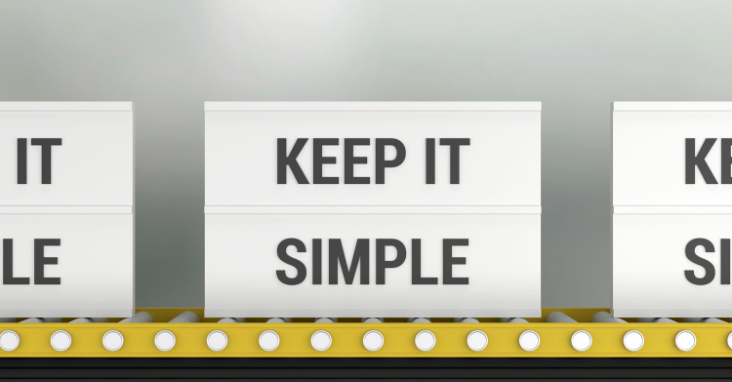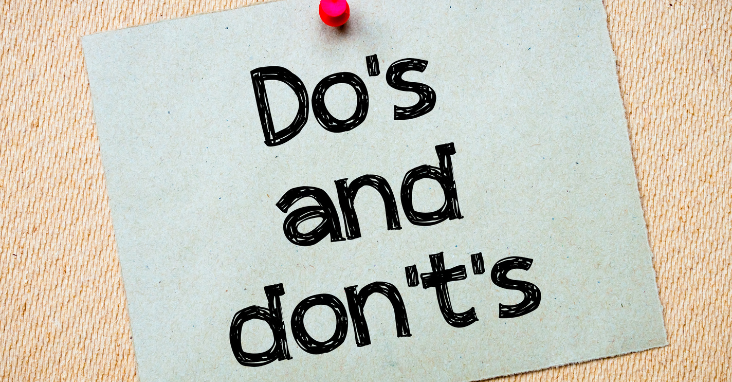Hey there! You’re here because you’re ready to take a new step in your career, right? That’s awesome! But before you march into the next adventure, there’s an essential task you need to take care of – writing a resignation letter. It sounds a bit formal, we know, but it’s an important step in moving on professionally.
What is a Resignation Letter?
In the simplest terms, a resignation letter is your official declaration that you’re leaving your current job. It’s not an epic poem or a lengthy dissertation—it’s a brief, professional letter that makes your intentions clear to your former employer. You might think of it as a formality, but it’s more than that. It’s your chance to leave on good terms and maintain your professional relationships.
A resignation letter is a short written notice an employee gives to their employer when they want to leave their job. It states their intention to resign, mentions the last working day, and may express gratitude or reasons for leaving.
Why is a Resignation Letter Necessary?
You may be asking yourself, “Why do I need to write a formal resignation letter anyway? Can’t I just tell my boss I’m leaving?” Well, while you certainly should have a face-to-face conversation, a written document makes your resignation official and provides a record for HR. It also allows you to control the narrative and ensure your decision is communicated accurately.
Now, let’s take a quick glance at what we’re going to cover in this post. Buckle up!
Overview of the Post
Throughout this post, we’re going to walk you through the process of crafting a simple, short, and sweet resignation letter. We’ll look at what needs to be included, talk about the best format to use, and point out a few pitfalls to avoid. We’ll even help you handle those tricky situations like resigning on short notice. Plus, we’ll give you a sample, professional business letter format, and a bunch of practical tips to make the process easier. By the end of it, you’ll be able to write a killer resignation letter that leaves a lasting, positive impression.
Alright, enough of the preliminaries. Let’s dive in!
Key Points
A resignation letter is a formal declaration of your intent to leave your job, serving as an official document for HR and your boss.
Writing a resignation letter is necessary for maintaining professional relationships and providing a clear record of your decision.
This post will guide you through the process of crafting a succinct, professional resignation letter, covering all necessary components, formats, and common pitfalls. We’ll also discuss unique scenarios, such as resigning on short notice, to ensure you’re fully prepared.

The Components of a Resignation Letter
Now that you understand the importance of a resignation letter, let’s take a closer look at its essential components. By including these key elements short notice resignation letter, you’ll ensure that your message is clear, professional, and respectful.
Addressing the Right Individual
When writing your resignation letter, it’s crucial to address it to the appropriate person. In most cases, this will be your immediate supervisor or manager. However, if there is a specific protocol in your organization, such as submitting the resignation letter sample to HR or a designated department, make sure to follow those guidelines.
Clear Declaration of Intent to Resign
The opening of your resignation letter should leave no room for ambiguity. Clearly state your intention to resign from your current position. Keep it direct and straightforward, avoiding unnecessary explanations or lengthy justifications.
Stating the Proposed Last Day
Include the date you intend for your resignation to take effect. Typically, this is two weeks from the date of the letter. However, if your employment contract or company policy requires a different notice period, adhere to those guidelines. Providing a specific last day helps your employer plan for your departure and ensures a smooth transition.
Offering Gratitude
Expressing gratitude in your resignation letter is an excellent way to maintain positive relationships and show appreciation for the opportunities you’ve had. Acknowledge the valuable experiences, professional growth, and support you’ve received during your tenure. However, keep it concise and avoid excessive flattery or personal anecdotes.
Your Signature
End your resignation letter with a professional closing and your signature. This adds a personal touch to notice resignation letter and demonstrates that the letter is genuine. If you’re submitting a printed copy, sign your name by hand. If you’re sending the letter electronically, you can use a scanned signature or a digital signature tool.
Key Points
Address the resignation letter to the appropriate person, following any specific protocols established within your organization.
Clearly state your intention to resign, avoiding unnecessary explanations or justifications.
Provide the proposed last day of employment, adhering to the standard notice period or any specific requirements outlined by your company.
Express gratitude for the opportunities and support you’ve received during your tenure, keeping it concise and professional.
Conclude the letter with a professional closing and your signature, adding a personal touch and authenticity to your resignation.

Tips for Keeping Your Resignation Letter Short and Simple
Writing a concise and straightforward resignation letter can help ensure that your message is clear and well-received. Here are some essential tips to keep in mind as you craft your basic resignation letter below:
Stay Professional and Focused
Maintain a professional tone throughout your resignation letter. Avoid discussing personal grievances, office politics, or negative experiences. Instead, focus on expressing gratitude, outlining your decision, and highlighting the positive aspects of your time with the company. By staying professional, you leave a positive impression and preserve your professional reputation.
Avoid Unnecessary Details
When writing a short resignation letter, it’s crucial to be selective with the information you include. Stick to the key points, such as your intention to resign, proposed last day, and a brief expression of gratitude. Avoid going into excessive detail about your reasons for leaving or any specific issues you may have encountered. Keep it concise and to the point.
Use Straightforward Language
Choose your words carefully to ensure your message is clear and easily understood. Use simple and straightforward language, avoiding jargon or overly formal expressions. Aim for a tone that is professional, respectful, and concise. Remember, the goal is to communicate your decision effectively while maintaining professionalism.
Keep a Positive Tone
Maintain a positive tone throughout your resignation letter, even if your reasons for leaving are less than favorable. Focus on the opportunities and growth you’ve experienced during your time with the company. Express gratitude for the relationships you’ve built and the skills you’ve acquired. Leaving on a positive note helps maintain professional relationships and can lead to positive references in the future.
Key Points
Maintain a professional and focused tone, avoiding personal grievances or negativity.
Be selective with the information you include, focusing on the key points of your resignation.
Use straightforward language that is clear and easily understood.
Keep a positive tone, expressing gratitude and focusing on the positive aspects of your experience with the company.

Step-by-Step Guide on Writing a Simple Short Resignation Letter
Now that you have a clear understanding of the components and tips for a concise resignation letter, let’s dive into a step-by-step guide to help you craft a simple resignation letter of your own. Follow these steps to create a simple and effective resignation letter:
Start with the Basic Formalities (1)
Begin your resignation letter with the appropriate salutation, such as “Dear [Supervisor’s Name],” or write a short, more general “To Whom It May Concern.” Make sure to address the letter to the right individual or department according to your organization’s protocols. This shows respect and ensures your letter reaches the intended recipient.
State your Intent to Resign Clearly and Directly (2)
In the opening paragraph, clearly state your intention to resign from your position. Keep it direct and straightforward, without going into extensive explanations or unnecessary details. Express your decision with confidence, but maintain a respectful tone throughout.
Mention the Effective Date (3)
Specify the date on which your resignation will take effect. Typically, this is two weeks from the date of your resignation letter. However, if your employment contract or company policy requires a different notice period, be sure to adhere to those guidelines. Providing your resignation letters with a specific effective date helps your employer plan for your departure and ensures a smooth transition.
Express Gratitude for the Opportunities Given (4)
Take a moment to express your appreciation and gratitude for the opportunities, experiences, and support you have received during your time with the company. Keep this section concise and focus on the positive aspects of your experience. Thank your colleagues, supervisors, and the organization as a whole for the growth and development you’ve experienced.
Conclude with Your Signature (5)
Wrap up your resignation letter with a professional closing, such as “Sincerely” or “Best regards,” followed by your full name and signature. If you’re submitting a printed copy, sign your name by hand. If you’re sending the letter electronically, you can use a scanned signature or a digital signature tool. This adds a personal touch and authenticity to your resignation email.
Key Points
Begin your resignation letter with the appropriate salutation, addressing the letter to the right individual or department.
Clearly state your intention to resign in a direct and straightforward manner, avoiding excessive explanations or unnecessary details.
Specify the effective date of your resignation, adhering to the standard notice period or any specific requirements outlined by your company.
Express gratitude for the opportunities, experiences, and support you’ve received during your time with the company, keeping it concise and positive.
Conclude your resignation letter with a professional closing and your signature for a personal touch.

Example of a Simple Short Resignation Letter
To help you visualize how all the components and tips come together, here are examples of short resignation letter samples below:
Short Resignation Letter – Example 1
Dear [Supervisor’s Name],
I am writing to inform you of my decision to resign from my position as [Your Position] at [Company Name], effective [Last Working Day]. Please consider this letter as my formal notice of resignation.
I would like to express my deepest gratitude for the opportunities and experiences I have gained during my time with [Company Name]. It has been a privilege to work alongside such dedicated and talented individuals. I am grateful for the support and guidance provided by you and the entire team, which has greatly contributed to my personal and professional growth.
I am committed to ensuring a smooth transition of my responsibilities. Please let me know how I can assist in this process. I will do my best to wrap up any outstanding projects and ensure a seamless handover of my duties before my departure.
Thank you again for the support and the opportunities that [Company Name] has provided me. I leave with cherished memories and valuable experiences that will benefit me in my future endeavors. I wish you and the team continued success.
Sincerely,
[Your Full Name]
Save Please Note This sample resignation letter is provided for guidance purposes only
Short Resignation Letter – Example 2
Dear [Supervisor’s Name],
I am writing to officially resign from my position as [Your Position] at [Company Name], effective [Last Working Day]. Please accept this letter as my formal notice of resignation.
I would like to express my sincere gratitude for the opportunities and experiences I have had during my time at [Company Name]. I have grown both professionally and personally, thanks to the support and mentorship provided by you and the entire team. The collaborative work environment and the chance to work on challenging projects have been invaluable to my career development.
I am committed to ensuring a smooth transition for my duties. I will work diligently to complete any pending projects and provide comprehensive handover documentation to ensure minimal disruption to ongoing work. Please let me know if there is anything specific I can do to facilitate this process.
Once again, I want to express my appreciation for the trust placed in me and for the positive work environment at [Company Name]. I am confident that the team will continue to achieve great success. I wish you and the entire company continued growth and prosperity.
Thank you for your understanding. If there are any further instructions or paperwork required, please let me know. You can reach me at my personal contact information provided above.
Sincerely,
[Your Full Name]
Save Please Note This sample resignation letter is provided for guidance purposes only

Common Mistakes to Avoid When Writing a Resignation Letter
While writing a resignation letter, it’s important to be mindful of common mistakes that can hinder its effectiveness and impact. By avoiding these pitfalls, you can ensure that your resignation letter maintains professionalism and leaves a positive impression. Here are some common mistakes to avoid:
Getting Too Personal or Emotional
When writing a resignation letter, it’s crucial to maintain a professional tone and avoid getting too personal or emotional. While it’s natural to have emotions surrounding your departure, it’s best to focus on the facts and maintain a respectful and composed tone throughout the letter. Avoid venting frustrations or placing blame, as this can damage professional relationships.
Speaking Negatively About the Company or Colleagues
One of the biggest mistakes to avoid is speaking negatively about the company or colleagues in your resignation letter. Even if you’ve had challenges or conflicts during your time at the company, it’s important to maintain a positive and professional tone. Focus on expressing gratitude for the opportunities and growth you’ve experienced, rather than dwelling on negative aspects.
Forgetting to Review and Proofread the Letter
Another common mistake is forgetting to review and proofread your resignation letter before sending it. Spelling mistakes, grammatical errors, or unclear language can detract from the professionalism and impact of your letter. Take the time to carefully review and edit your resignation letter template, ensuring that it is clear, concise, and free from errors.
Key Points
Avoid getting too personal or emotional in your resignation letter, maintaining a professional tone throughout.
Refrain from speaking negatively about the company or colleagues, focusing on expressing gratitude instead.
Remember to review and proofread your letter to ensure it is error-free and communicates your message clearly and effectively.

Essential Do’s and Don’ts of Writing a Resignation Letter
When writing a resignation letter, it’s important to follow certain do’s and don’ts to ensure your letter is professional, respectful, and effective. Here are some essential guidelines to keep in mind:
Do’s: Practices for a Well-Written Resignation Letter
Be clear and concise: Clearly state your intention to resign and provide a specific last day of employment.
Express gratitude: Show appreciation for the opportunities and experiences you’ve had during your time with the company.
Maintain a professional tone: Keep the letter respectful, positive, and focused on your departure and future endeavors.
Offer assistance in the transition: Express willingness to help with the transition by wrapping up projects and providing a smooth handover.
Proofread and edit: Ensure your letter is error-free, well-structured, and free from grammatical mistakes.
Don’ts: Practices to Avoid in Your Resignation Letter
Don’t be overly negative: Avoid criticizing the company, colleagues, or management in your resignation letter.
Don’t provide excessive detail: Keep your letter concise and focused on the essential information without going into unnecessary explanations.
Don’t burn bridges: Maintain professionalism, even if you had negative experiences, and aim to leave on a positive note.
Don’t make promises you can’t keep: Be realistic in offering assistance during the transition, considering your own availability and workload.
By adhering to these do’s and don’ts, you can ensure that your resignation letter reflects professionalism, gratitude, and a commitment to a smooth transition.
Key Points
Do be clear, concise, and express gratitude in your resignation letter.
Do maintain a professional tone and offer assistance during the transition.
Don’t be overly negative or provide excessive detail in your letter.
Don’t burn bridges or make promises you can’t keep.
Following these guidelines will help you write a well-crafted and effective resignation letter.

Conclusion
Writing a simple short resignation letter may seem like a straightforward task, but it requires thoughtfulness and professionalism. By following the guidelines provided in this blog post, you can ensure that your short resignation letter template is effective, respectful, and concise.
Throughout the process, remember the key components of a resignation letter, such as addressing the appropriate person, clearly stating your intent to resign, providing a specific last day, expressing gratitude, and signing the letter with a professional closing.
Additionally, be mindful of common mistakes to avoid, such as getting too personal or negative in your letter, forgetting to proofread and edit, or making promises you can’t keep. Adhering to the do’s and don’ts will help you maintain professionalism and leave a positive impression.
When delivering your formal resignation by letter, schedule a meeting with your supervisor, present a printed copy, express gratitude verbally, and maintain professionalism and respect throughout the conversation. Following up with an email can serve as a written confirmation and ensure clear communication.
After submitting your resignation letter, expect acknowledgment from your supervisor or HR department, complete any necessary exit procedures, contact details to assist in the transition process, and handle any final documentation that may be required.
By implementing the tips provided, such as being clear and concise, expressing gratitude, maintaining professionalism, and offering assistance during the transition, you can write an effective resignation or letter of resignation that facilitates a smooth departure and preserves positive relationships.
Remember, resigning from a position is a significant step in your professional journey. Approach the process with care, gratitude, and professionalism, leaving a lasting positive impression as you transition to new opportunities.















